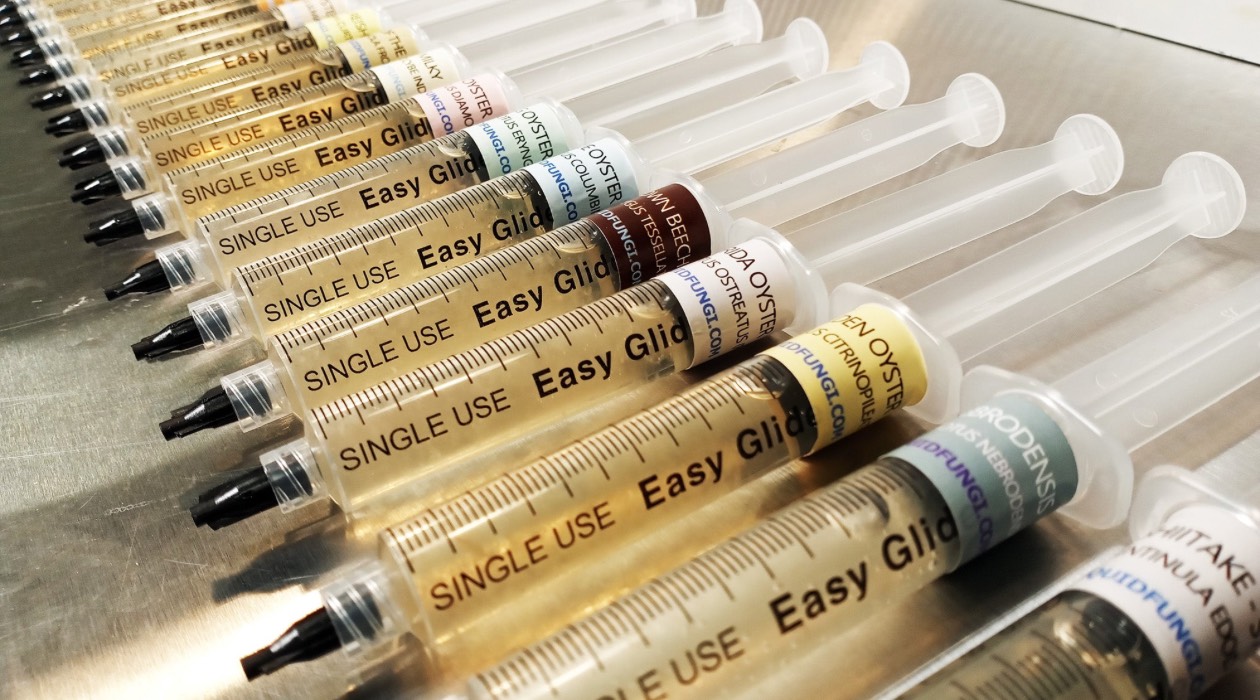

Articles
How To Store Liquid Nitrogen
Modified: August 27, 2024
Learn the proper techniques and safety guidelines for storing liquid nitrogen. Read our informative articles for expert advice and recommendations.
(Many of the links in this article redirect to a specific reviewed product. Your purchase of these products through affiliate links helps to generate commission for Storables.com, at no extra cost. Learn more)
Introduction
Welcome to this comprehensive guide on how to store liquid nitrogen safely and efficiently. Liquid nitrogen is an incredibly cold and versatile substance that is commonly used in various industries, including scientific research, cryogenic preservation, and culinary applications. However, due to its extremely low temperature and potential hazards, proper handling and storage are crucial to ensure safety.
In this article, we will explore the essential safety precautions, the selection of suitable containers, the proper procedures for filling and storing liquid nitrogen, guidelines for handling and transportation, as well as tips for monitoring and maintaining the storage system.
Before we proceed, it’s important to emphasize that safety should be the top priority when dealing with liquid nitrogen. This powerful cryogenic liquid can cause severe frostbite and burns upon contact with skin or other materials. Additionally, the rapid expansion of liquid nitrogen into gas form can lead to the buildup of pressure, potentially causing explosions or ruptures if not handled properly.
With that in mind, let’s dive into the important safety precautions to keep in mind when working with liquid nitrogen.
Key Takeaways:
- Safety is paramount when storing liquid nitrogen. Always wear proper PPE, ensure ventilation, and select suitable containers to prevent accidents and injuries.
- Diligent monitoring, maintenance, and proper handling are crucial for safe storage of liquid nitrogen. Regular inspections, temperature monitoring, and leak detection are vital for accident prevention.
Read more: How To Store Liquid Chlorine
Safety Precautions
When working with liquid nitrogen, it is important to follow strict safety precautions to minimize the risk of accidents or injuries. Here are some key guidelines to keep in mind:
- Personal Protective Equipment (PPE): Always wear appropriate PPE, including insulated gloves, face shields, and safety goggles, to protect yourself from potential hazards. Insulated clothing, such as a lab coat or cryogenic apron, should also be worn.
- Ventilation: Ensure that the storage area or workspace is well-ventilated to prevent the buildup of nitrogen gas. This is crucial, as nitrogen gas can displace oxygen and create an oxygen-deficient environment, leading to asphyxiation.
- Storage Area: Store liquid nitrogen in a well-ventilated and well-lit area, away from sources of heat, flame, or direct sunlight. The storage area should have clear signage indicating the presence of cryogenic materials and emergency contact information.
- Spill Management: In the event of a spill, evacuate the area immediately and alert others nearby. Liquid nitrogen spills should be cleaned up using appropriate absorbent materials designated for cryogenic substances. Never use organic materials, such as cloth or paper, as they can become extremely brittle and increase the risk of frostbite.
- Preventing Oxygen Exposure: Liquid nitrogen can rapidly boil and release nitrogen gas when in contact with warmer objects. To prevent oxygen exposure, do not seal containers tightly, as this can lead to pressure buildup. Use containers specifically designed for cryogenic materials, such as dewars or cryogenic storage tanks, which have venting mechanisms to allow the release of gas.
By following these safety precautions, you can ensure a safer working environment when handling and storing liquid nitrogen. Next, let’s explore the selection of a suitable container for storing this cryogenic substance.
Selecting a Suitable Container
Choosing the right container for storing liquid nitrogen is crucial to maintain its temperature and prevent accidents. Here are some factors to consider when selecting a suitable container:
- Cryogenic Storage Tanks: For large-scale storage, consider using cryogenic storage tanks. These tanks are designed to store and handle large quantities of liquid nitrogen safely. They are typically made of stainless steel or aluminum and have high insulation capabilities to minimize heat transfer and maintain the low temperature.
- Dewars: Dewars are smaller and more portable containers commonly used in laboratories and medical facilities. They are often made of stainless steel or borosilicate glass and have superior insulation to keep the liquid nitrogen at a stable temperature for an extended period. Dewars come in various sizes, so choose one that suits your storage needs.
- Material Compatibility: Ensure that the container is compatible with liquid nitrogen to avoid any leaks or reactions. Stainless steel and borosilicate glass are commonly used materials that are compatible with liquid nitrogen. Avoid containers made of certain plastics or materials that can become brittle at low temperatures.
- Capacity: Consider the volume of liquid nitrogen you need to store and choose a container that can accommodate that volume. Make sure to leave enough headspace in the container to allow for expansion as the liquid nitrogen evaporates and forms gas.
- Sealing Mechanism: Look for containers that have secure sealing mechanisms to prevent leaks and maintain the low temperature. The sealing mechanism should be easy to operate and provide a tight seal to minimize the escape of gas.
Once you have selected a suitable container, the next step is to fill it with liquid nitrogen using proper procedures. Let’s explore the filling process in the next section.
Filling the Container
Filling a container with liquid nitrogen requires careful attention and adherence to proper procedures. Here are the steps to follow when filling a container:
- Prepare the Container: Ensure that the container is clean, dry, and in good condition. Make sure the sealing mechanism is intact to prevent any leaks during the filling process.
- Personal Protective Equipment: Wear appropriate PPE, including insulated gloves and safety goggles, to protect yourself from potential hazards. Insulated clothing should also be worn to protect against the extreme cold.
- Secure the Container: Properly secure the container in an upright position to prevent it from tipping over during the filling process. Use sturdy supports or racks designed for cryogenic containers.
- Connect the Transfer Line: Connect the transfer line from the liquid nitrogen supply source to the container. Ensure that the connection is secure and airtight to prevent any leakage.
- Open the Valves: Slowly open the valves on the liquid nitrogen supply source and the container to allow the transfer of liquid nitrogen. Do not open the valves too quickly, as rapid pressure changes can cause damage or leaks.
- Monitor the Filling: Pay close attention to the filling process and monitor the level of liquid nitrogen in the container. Slowly fill the container, avoiding overfilling, as the liquid nitrogen will expand as it warms up.
- Close the Valves: Once the desired level of liquid nitrogen is reached, close the valves on both the supply source and the container to stop the flow of liquid. Double-check that the valves are tightly closed to avoid any leakage.
It is important to note that the filling process should be carried out by trained personnel who are familiar with the proper handling of liquid nitrogen. Following these steps will ensure a safe and successful filling of the container. In the next section, we will discuss the proper methods for storing liquid nitrogen.
Always store liquid nitrogen in a well-ventilated area to prevent the build-up of pressure. Use a designated storage container that is specifically designed for holding liquid nitrogen to ensure safety.
Storing Liquid Nitrogen
Proper storage of liquid nitrogen is crucial to maintain its low temperature and minimize the potential for accidents. Here are some guidelines for storing liquid nitrogen:
- Location: Store liquid nitrogen in a well-ventilated and well-lit area that is separate from active workspaces. Choose an area that is away from heat sources, flames, and direct sunlight, as exposure to high temperatures can cause the liquid nitrogen to rapidly boil and release nitrogen gas.
- Secure Storage: Ensure that the containers are securely stored in an upright position, preferably with sturdy supports or racks designed for cryogenic containers. This will prevent them from tipping over and causing spills or accidents.
- Handling Labels and Signs: Clearly label the storage area to indicate the presence of cryogenic materials and emergency contact information. Use caution signs to remind people of the potential hazards and proper handling procedures.
- Regular Inspections: Regularly inspect containers for any signs of damage, such as cracks or leaks. Damaged containers should be replaced or repaired immediately to prevent the risk of accidents or loss of stored liquid nitrogen.
- Temperature Monitoring: Use temperature monitoring devices, such as temperature sensors or liquid level indicators, to regularly monitor the temperature and level of liquid nitrogen in the storage containers. This will ensure that the desired temperature is maintained and alert you to any potential issues.
- Access Control: Limit access to the storage area to authorized personnel only. This will help prevent unauthorized handling of the containers and minimize the risk of accidents or misuse.
- Emergency Response: Develop and communicate emergency response procedures in case of a spill or other accidents involving liquid nitrogen. Ensure that all personnel are trained on these procedures and have access to the necessary safety equipment.
By following these guidelines, you can effectively store liquid nitrogen and reduce the risk of accidents or injuries. In the next section, we will discuss the proper handling and transportation of liquid nitrogen.
Read more: How To Store Prednisolone Liquid
Handling and Transportation
Proper handling and transportation of liquid nitrogen are essential to ensure safety and prevent accidents. Whether you need to move liquid nitrogen within a facility or transport it to a different location, here are some guidelines to follow:
- Secure the Container: Ensure that the container is tightly sealed and securely fastened before handling or transporting it. Use handles or straps, if available, to provide a firm grip and minimize the risk of dropping or tipping over.
- Use Appropriate Equipment: When moving or lifting containers of liquid nitrogen, use appropriate equipment such as trolleys or carts designed for cryogenic materials. Avoid carrying containers by hand, as they can be heavy and cumbersome, increasing the risk of accidents.
- Protective Gear: Wear appropriate personal protective equipment (PPE) including insulated gloves, safety goggles, and insulated clothing. Insulated shoes or boots should also be worn to protect against the extreme cold temperature of liquid nitrogen.
- Minimize Distance and Time: Keep the distance and time of transportation to a minimum to prevent excessive warming of the liquid nitrogen. Plan the route to minimize exposure to heat sources and ensure a smooth and quick transfer.
- Prevent Bumping or Collisions: Avoid bumping or colliding containers during transportation, as this can cause damage and potential leaks. Be cautious of obstacles and uneven surfaces to maintain stability and prevent accidents.
- Vehicle Precautions: If transporting liquid nitrogen in a vehicle, ensure proper ventilation to prevent gas buildup. Do not seal the container tightly, as the expansion of gas could create pressure. Secure the container in an upright and stable position to prevent it from moving during transportation.
- Emergency Response: Have a plan in place for responding to emergencies during transportation, such as spillage or accidents. Ensure that all personnel involved in the transportation are aware of the emergency procedures and have access to the necessary safety equipment.
Remember, proper handling and transportation of liquid nitrogen are vital for maintaining safety. By following these guidelines, you can minimize the risks and ensure a smooth and secure transfer. In the next section, we will discuss the importance of monitoring and maintaining the storage system.
Monitoring and Maintenance
Regular monitoring and maintenance of the storage system are crucial to ensure the safe and efficient storage of liquid nitrogen. Here are some important aspects to consider:
- Temperature Monitoring: Use temperature monitoring devices, such as digital thermometers or temperature sensors, to regularly monitor the temperature inside the storage containers. Ensure that the temperature remains within the desired range to maintain the integrity of the liquid nitrogen.
- Liquid Level Inspection: Regularly check the liquid level in the containers to ensure an adequate supply of liquid nitrogen. Avoid overfilling the containers, as the liquid nitrogen will expand as it warms up and can lead to pressure buildup.
- Leak Detection: Periodically inspect the containers for any signs of leaks, such as frost formation or hissing sounds. If a leak is detected, follow proper protocols for handling the situation and address the issue promptly.
- Container Integrity: Regularly inspect the containers for any signs of damage, such as cracks, dents, or corrosion. Damaged containers should be repaired or replaced immediately to prevent the risk of accidents or loss of stored liquid nitrogen.
- Documentation and Records: Maintain accurate and up-to-date records of the storage system, including inspection dates, maintenance activities, and any incidents or repairs. This documentation will help track the condition of the system and provide a history for reference.
- Train Personnel: Provide proper training to personnel responsible for monitoring and maintaining the storage system. Ensure they are familiar with the safety procedures, equipment usage, and emergency response protocols.
- Regular Maintenance Schedule: Establish a regular maintenance schedule for the storage system, including tasks such as cleaning, calibration of temperature monitoring devices, and checking the functionality of safety features.
By diligently monitoring and maintaining the storage system, you can ensure the safe and optimal storage of liquid nitrogen. This will help minimize the risk of accidents, maintain product integrity, and extend the lifespan of the storage containers. In the next section, we will conclude with a summary of the key points discussed in this article.
Conclusion
Proper storage of liquid nitrogen is of utmost importance to ensure safety and maintain its low temperature. By following the guidelines outlined in this article, you can minimize the risk of accidents or injuries while storing and handling liquid nitrogen.
First and foremost, always prioritize safety by wearing appropriate personal protective equipment (PPE) and working in a well-ventilated area. Remember to select a suitable container, such as cryogenic storage tanks or dewars, that is made of compatible materials and has secure sealing mechanisms.
When filling the container, take precautions to ensure a smooth and safe process. Monitor the filling, double-check the valve closures, and maintain the recommended level with caution.
Once stored, be diligent in maintaining the storage area. Regular inspections, temperature monitoring, and leak detection are vital to prevent accidents. Proper handling and transportation, along with proper documentation and training, will further reduce the risk of mishaps.
Ultimately, it is essential to have a thorough understanding of the properties and potential hazards of liquid nitrogen. By following the guidelines in this article, you can safely store and handle liquid nitrogen, ensuring the protection of yourself and those around you.
Remember, always prioritize safety and consult professionals or guidelines specific to your industry or application for additional guidance. By taking the necessary precautions, you can safely harness the immense potential of liquid nitrogen while minimizing risks.
Thank you for reading this comprehensive guide on how to store liquid nitrogen safely. Stay safe and continue learning!
Frequently Asked Questions about How To Store Liquid Nitrogen
Was this page helpful?
At Storables.com, we guarantee accurate and reliable information. Our content, validated by Expert Board Contributors, is crafted following stringent Editorial Policies. We're committed to providing you with well-researched, expert-backed insights for all your informational needs.















0 thoughts on “How To Store Liquid Nitrogen”